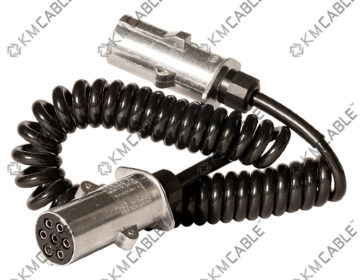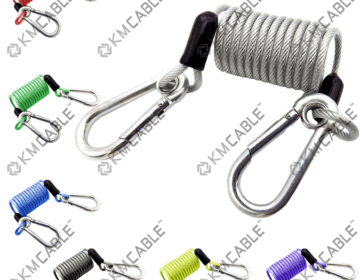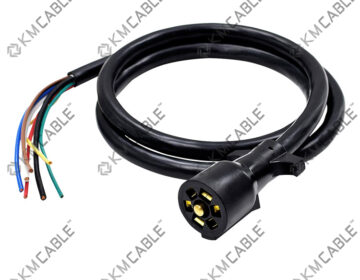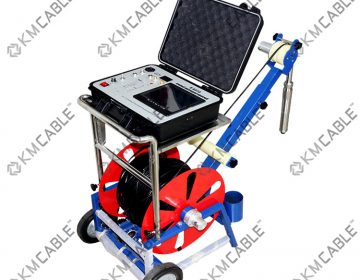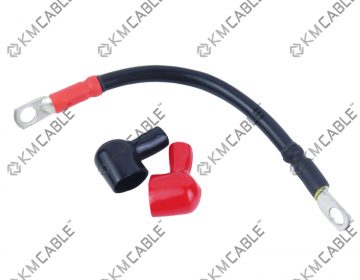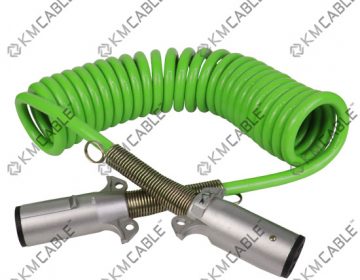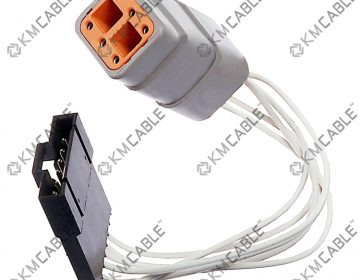
Power cables are essential components in industrial and commercial settings, responsible for transferring electricity to machinery, equipment, and lighting systems safely and effectively. From standard 0.6/1 KV cables to advanced XLPE (Cross-Linked Polyethylene) cables, understanding the different types and uses is vital to ensuring reliability and safety. In this guide, we’ll delve into power cable terminology, classifications, and materials, and provide guidance on installation, safety, and maintenance practices.
Power cables are designed to carry electrical power in various environments, including industrial, commercial, and residential applications. They’re engineered to withstand different levels of voltage and environmental conditions. Selecting the right type of cable is critical, as it impacts not only efficiency but also safety and durability.
Importance of Choosing the Right Power Cable
Using an improper cable type or size can result in electrical failures, overheating, or short circuits, potentially leading to costly repairs or even hazards. Specifically, 0.6/1 KV and XLPE cables offer different levels of insulation and temperature tolerance suited to diverse applications.
Key Terminologies in Power Cables
Understanding power cable terminology is essential to making informed choices:
– Voltage Rating: The maximum voltage a cable can handle. For instance, 0.6/1 KV cables are rated for lower voltage applications, while higher-rated cables are suitable for demanding industrial needs.
– Conductor: The core material that conducts electricity, usually copper or aluminum.
– Insulation: The material surrounding the conductor, preventing electrical leakage and ensuring safety.
Types of Power Cable Based on Voltage
Power cables are classified according to their voltage rating, affecting their suitability for different applications. Low-voltage cables (up to 1 KV) are common in commercial and residential buildings, while medium-voltage (1 KV to 35 KV) and high-voltage cables (above 35 KV) are essential for industrial and large-scale power transmission.
Overview of 0.6/1 KV Power Cables
0.6/1 KV power cables are low-voltage cables commonly used for internal power distribution, lighting, and smaller electrical systems. They are cost-effective, flexible, and relatively easy to install, making them ideal for general-purpose use.
Applications and Benefits
These cables are widely used in low-stress environments where the risk of extreme temperatures or heavy mechanical stress is minimal. They are often found in commercial buildings, residential projects, and small industrial setups where power requirements are relatively low.
Introduction to XLPE Cables
XLPE, or Cross-Linked Polyethylene, is an insulation material that undergoes a cross-linking process, making it highly resistant to heat, chemicals, and stress. XLPE cables are an upgrade over traditional PVC-insulated cables due to their superior durability and flexibility.
Advantages of XLPE Insulation
– High Temperature Tolerance: XLPE can withstand temperatures up to 90°C during normal operation and up to 250°C in short-circuit conditions.
– Mechanical Strength: This makes XLPE cables durable and resistant to wear, ideal for environments where cables might be exposed to harsh conditions.
– Chemical Resistance: XLPE is resistant to chemicals, oils, and moisture, making it an excellent choice for industrial environments.
Common Applications of XLPE Cables
XLPE cables are commonly used in underground installations, industrial plants, and electrical substations where mechanical and environmental stresses are significant. They are preferred in heavy industries, such as mining, oil, and gas, where high-performance insulation is critical.
Conductor Materials in Power Cables: Copper vs. Aluminum
Copper and aluminum are the two main conductor materials used in power cables.
– Copper: Known for high conductivity, copper is a premium choice for industrial power cables. It is corrosion-resistant and efficient at conducting electricity, making it suitable for sensitive or high-performance applications.
– Aluminum: Lightweight and cost-effective, aluminum is commonly used for applications where weight is a factor. It is less conductive than copper, so it often requires larger cables to carry the same amount of current, but it is still a popular choice due to its affordability.
Conductor Selection Criteria
When choosing a conductor, factors like conductivity, weight, cost, and installation ease should be considered. Copper’s higher efficiency makes it a preferred option, but aluminum’s cost advantage makes it practical for large-scale applications.
Insulation Types in Power Cables
Insulation in power cables serves as a protective layer around the conductor to prevent electrical leakage and enhance safety. Key insulation types include:
– PVC (Polyvinyl Chloride): PVC is cost-effective and provides good resistance to moisture and general environmental conditions, making it suitable for general-purpose applications.
– XLPE (Cross-Linked Polyethylene): Known for its high thermal resistance and durability, XLPE is the material of choice for cables exposed to high temperatures or mechanical stress.
– EPR (Ethylene Propylene Rubber): A flexible and robust insulation material, EPR is commonly used in environments where cables are regularly exposed to harsh conditions.
Each insulation type has unique properties that make it suitable for specific industrial environments, from general purpose (PVC) to heavy-duty use (XLPE and EPR).
Sheathing Materials in Industrial Power Cables
The sheath is the outer protective layer of a power cable. Common sheathing materials include PVC, rubber, and polyethylene.
– PVC: Common for general-purpose use due to its affordability and durability.
– Polyethylene (PE): Offers better moisture resistance than PVC and is suitable for underground installations.
– Rubber: Used in cables that require high flexibility and are exposed to physical impacts.
Choosing the right sheath is essential to protect against physical, chemical, and environmental hazards.
Armored vs. Non-Armored Cables
Armored cables feature an extra layer of metallic protection around the conductor and insulation layers, providing additional durability and protection.
When to Use Armored Cables
Armored cables are recommended in industrial environments where there is a risk of physical damage, such as construction sites, factories, or areas with heavy machinery. Non-armored cables, while lighter and less expensive, are better suited for applications where they are unlikely to experience physical stress.
Power Cable Standards and Certifications
Power cables must meet international standards and certifications to ensure they operate safely and effectively. Important standards include:
– IEC (International Electrotechnical Commission): Governs electrical equipment safety and performance.
– NEC (National Electrical Code): Specifies safety standards for electrical installations in North America.
– BS (British Standards): Defines safety and operational requirements for cables in the UK.
XLPE and 0.6/1 KV cables often have specific standards governing their use, which ensures compliance with safety and performance criteria.
Power Cable Sizing and Selection
Correct cable sizing is essential for optimal performance and safety. Choosing an undersized cable can lead to overheating, while an oversized cable can be unnecessarily costly. Key considerations include:
– Current Carrying Capacity: The amount of current a cable can safely carry without overheating.
– Voltage Drop: The reduction in voltage as electricity travels along the cable, particularly important in long-distance installations.
Use a cable sizing chart to ensure the selected cable meets the application’s load and distance requirements.
Installation Guidelines for Power Cables
Proper installation techniques are crucial to ensure the longevity and safety of power cables.
– Cable Trenching: For underground installations, cables should be laid in trenches to avoid damage.
– Above-Ground Installations: Use cable trays or conduits to protect the cables from environmental exposure.
Correct installation methods prevent issues such as overheating, physical damage, and short circuits.
Safety Precautions and Regulatory Compliance
Safety measures and adherence to regulations are essential during installation and operation. Key safety practices include:
– Proper Grounding: Ensures that cables are safely grounded to avoid electric shock or fire.
– Protective Equipment: Use of PPE (Personal Protective Equipment) during installation and maintenance.
– Fire Resistance: Ensuring cables meet fire-resistance standards for high-risk environments.
Regulations like the NEC and IEC codes offer guidelines on cable installation, routing, and maintenance to ensure safety and compliance.
Maintenance and Testing of Power Cables
Regular maintenance and testing help prolong the lifespan of power cables and ensure reliable operation. Common testing methods include:
– Insulation Resistance Testing: Checks the condition of the insulation and detects any degradation.
– Hi-Pot Testing: Applies a high voltage to check the cable’s insulation strength and detect weak points.
Routine inspections help identify wear and tear, allowing for timely repairs or replacements, reducing downtime and ensuring safety.
Environmental Considerations for Power Cables
Cables in industrial settings are often exposed to extreme conditions, such as high temperatures, moisture, and UV exposure.
– Temperature Tolerance: Cables like XLPE handle higher temperatures, reducing risk in hot environments.
– Moisture Resistance: Ensures cables can operate in humid or wet environments without degradation.
– UV Protection: Outdoor installations require UV-resistant sheathing to prevent damage from sun exposure.
Understanding these environmental factors allows for selecting materials that match specific conditions, thus increasing the cable’s lifespan.
Frequently Asked Questions (FAQs)
1. What is the difference between 0.6/1 KV and XLPE cables?
0.6/1 KV refers to the voltage rating, suitable for low-voltage applications, while XLPE describes the type of insulation, offering durability and high temperature tolerance.
2. Why are armored cables used in industrial settings?
Armored cables offer additional protection against physical damage, making them suitable for environments with heavy machinery or high traffic.
3. How do I select the right power cable for my application?
Consider factors like voltage, current load, environmental conditions, and installation type. Consulting a cable sizing chart and relevant standards is advised.
4. Can I use aluminum cables instead of copper?
Yes, aluminum cables are a cost-effective alternative to copper, though they may require larger sizes to carry the same current.
5. Are XLPE cables more expensive than PVC cables?
Yes, XLPE cables are generally more expensive, but they provide better durability, making them more cost-effective over time in harsh environments.
6. What maintenance is required for power cables?
Regular inspections, insulation resistance testing, and visual checks are essential for detecting issues before they lead to failures.

